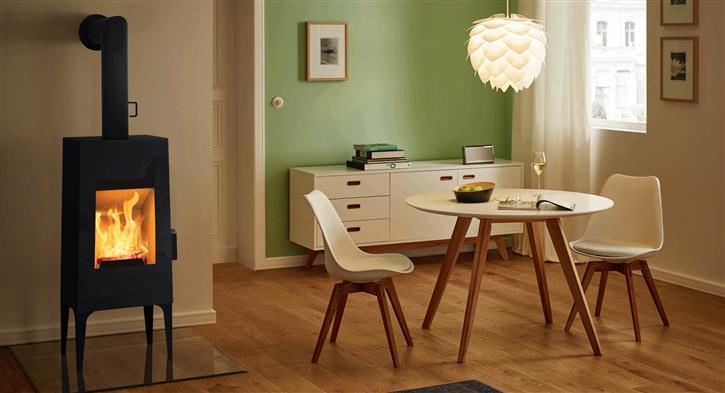

When specifying a wood burning stove, installers need to get it right in terms of style, application and making sure the product is sourced from a reputable supplier. Simon Holden offers some sound advice.
A wood burning stove provides a great focal point for any home, whether traditional or contemporary in style, and is a practical means of cutting heating bills, helping to lower the utility bills of the average family household. Today’s stoves have come a long way in terms of design and technology, with many models reaching efficiencies of up to 80%.
Purchasing a stove requires some thought, however; as well as choosing a reputable supplier who can guide you on all aspects from purchase to installation, careful consideration needs to be given to the application to make sure the stove you’ve selected has been sized correctly. Is it an open-plan space you’re looking to heat? How is the room used? What is the insulation like?
There are good online heat calculators that can give you a general idea of what size unit you need for the available space, many of which help you take into account influencing factors such as level of insulation, ceiling height, double-glazing and whether internal doors are intended to be open or shut on a regular basis, etc.
Safe installation
Once you’ve sourced a quality stove from a reputable supplier, it’s essential it is installed safely. Be aware that:
Staying safe online
If you’re purchasing a stove online, consider the following:
Get it right, and sourcing the right product online can save a lot of time and effort, with purchases delivered straight to your front door, offering you the widest choice and the best bargains at the click of a button.
Simon Holder is co-founder at Euroheat
If you'd like to keep up-to-date with the latest developments in the heating and plumbing industry, why not subscribe to our weekly newsletters? Just click the button below and you can ensure all the latest industry news and new product information lands in your inbox every week.